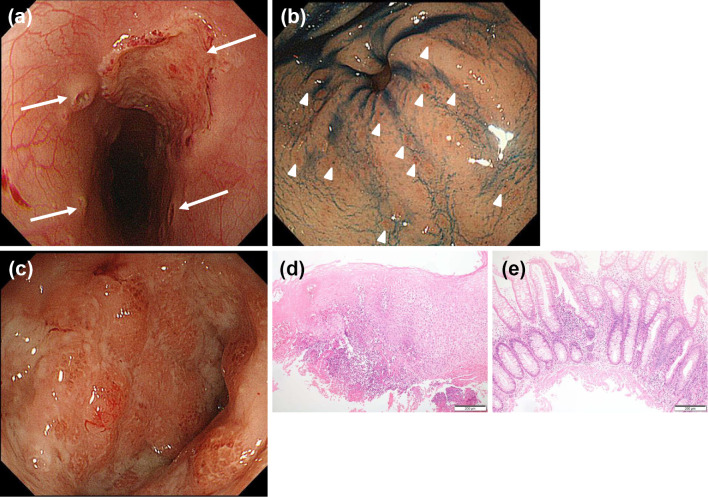Figure 1.
Esophagogastroduodenoscopy (EGD), colonoscopy, and their pathological findings. (a) EGD showing an ulcer with aphthae (arrows) in the mid intrathoracic esophagus. (b) EGD showing widespread aphthae (arrowheads) at the antrum. (c) Colonoscopy showing erythema and mucosal friability in the sigmoid colon. (d) Biopsy specimen from the esophageal ulcers showing severe inflammatory cell infiltration [Hematoxylin and Eosin (H&E) staining, ×100]. (e) Biopsy specimen from the colon showing inflammatory cell infiltration with cryptitis in the rectum (H&E staining, ×100).

